Wine in Italy is as much an integral part of everyday culture as love, family, cuisine and using hand gestures when speaking.
There is a long relationship with wine, and its history dates back thousands of years. Ancient cultures such as the Mesopotamians, Phoenicians and Moors all came to Italy at one point, bringing in vines and methods of wine-making. The Greeks in particular had a large impact on what would transition into the Roman passion for wine. They settled in southern Italy in the 7th and 8th centuries BC, finding the conditions in the region perfectly suited to viticulture. They called their new territories “Oenotria,” which translates to “land of wine.” And today we’ve got the brief wine guide through Italian amazing regions but these are only part of the land of wine where you cannot get enough of.
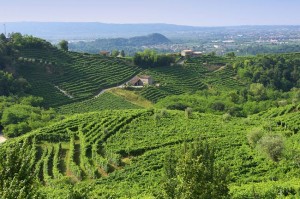 Veneto
Veneto
The history of wine-making in the region can be traced back as far as a few centuries BC in the Bronze Age. The Romans eventually took over and began dividing plots of land into more organized vineyard sites. They also established the cities that would become Venice (Venezia) and Verona, both major hubs for fashion, art, trade and wine. There are 6th century written documents by Cassiodoro, a magistrate of Visigoth King Theodorus, describing a sweet wine made from half dried grapes in Verona that is mostly likely an early version of Amarone or Recioto. “Straw wine,” the process used to make these wines by drying grapes on straw mats before pressing, is a style of wine-making that was passed on from the ancient Greeks. Both Amarone and Valpolicella, the table wine version using the same grapes (Corvina, Molinara and Rondinella), became popular Veneto exports. As was likely some version of Bardolino, which is now officially a blend of the same grapes with a small percentage of others such as Rossignola, Sangiovese or Garganega.
A trade embargo with the Ottomans in the 16th century forced local agriculture to broaden its domestic scope. More attention was paid to viticulture in hopes of reviving the industry by putting more emphasis on quality local wine production. The success of this effort paid off both domestically and abroad with other European countries, the New World and China.
The Veneto was hit hard by the Phylloxera crisis in the late 19 the century, but because trade was so vital to the region, especially with the construction of modern trade routes such as the Suez canal, viticulturalists acted quickly once the “cure” of grafting American root stock to local vines was discovered.
Sadly, the region had garnered a poor reputation between the 1950s and the later half of the 20th century for importing a lot of mass-produced wines, especially Soave (Soave Bolla anyone?) , sweet and skunky Proseccos and some very fruity, insipid versions of Valpolicella. But things turned around by the late 1980s and 1990s. While those wines still exist, there is far more emphasis on quality production for local consumption and imports.
 The Veneto is comprised of many different terrains and microclimates, which account for its range of varietals and styles. The topography divides itself into three sections where wine is produced: the province of Verona to the west (between Lake Garda and Soave town). The hills in the center surrounding Vicenza, Padova and Treviso. And the much flatter plains of Piave Tagliamento river basins, along the Adriatic coast, to the northeast of Venice. In all there are now 24 DOCs within the region.
The Veneto is comprised of many different terrains and microclimates, which account for its range of varietals and styles. The topography divides itself into three sections where wine is produced: the province of Verona to the west (between Lake Garda and Soave town). The hills in the center surrounding Vicenza, Padova and Treviso. And the much flatter plains of Piave Tagliamento river basins, along the Adriatic coast, to the northeast of Venice. In all there are now 24 DOCs within the region.
And from Veneto, we’d like to present one of the legendary wine that you just have to try at least once in your lifetime – for this wine… once is never enough. As we told you above that one of the can’t-miss and that is “Amarone” – if you want to try Amarone 2008 from Allegrini, don’t hesitate to contact us and make any night of yours turned legendary. This week we have an amazing promotion with a 25% discount of the Amarone 2008, Allegrini! Contact us!
Lombardy
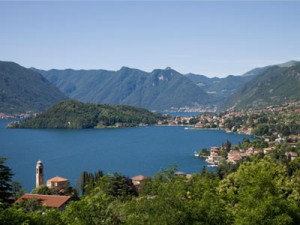 Lombardy is a landlocked region huddled in the northwest of Italy between Piedmont, Emilia-Romagna, the Veneto and Trentino-Alto Adige. This northern part of the region is a tourist destination surrounding the lakes Como, Iseo, Maggiore and Garda (which also spills into the Veneto and Trentino-Alto Adige).
Lombardy is a landlocked region huddled in the northwest of Italy between Piedmont, Emilia-Romagna, the Veneto and Trentino-Alto Adige. This northern part of the region is a tourist destination surrounding the lakes Como, Iseo, Maggiore and Garda (which also spills into the Veneto and Trentino-Alto Adige).
Lombardy was once the base for the ancient Germanic tribe the Lombards (hence the name), who took it over from the Romans in the 6th century BC. Like much of Italy, Lombardy was in a vicious cycle of stability followed by invasion and land dispute for centuries through the Middle Ages and Renaissance. The Austrians absorbed the region as part of the Lombardo-Venetian Kingdom from 1815 until 1859, then it came under control of the French House of Savoy until the end of World War II when the family was exiled from Europe and Italy became a republic. But regardless of all of this dispute and upheaval, wines were always a part of the local culture in some form.
Even with such bustling, industrial cities such as its capital, Milan, much of Lombardy’s rolling hills and lake country is left unsullied by heavy infrastructure. Its position between the Alps and the Po river and the aforementioned lakes creates many microclimates and growing conditions. Valtellina and Garda are among the cooler climate subregions near the Alps and the “great lakes.” In the lower-lying areas, such as DOCs Oltrepo Pavese and San Columbano al Lambro, conditions become more hot and humid.
The DOCGs Franciacorta and Oltrepo Pavese Metodo Classico are considered Italy’s answer to Champagne, with the classic blend of Chardonnay, Pinot Nero and Pinot Bianco, sometimes also Pinot Grigio. Both are produced in the same methode traditionelle as Champagne, with the secondary fermentation in the bottle and the usual phases of bottle rotation, disgorgement and dosage. This is unusual for Italy, where most sparkling wines are produced in the Charmat method, with secondary fermentation in steel tanks. Both are also produced in rosato styles, with Pinot Nero as the primary varietal in the blend.
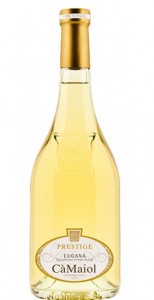 The starring grape of the Valtellina region is Chiavennasca, the local name for Nebbiolo. It forms the base for two DOCGs, Valtellina Superiore and Sforzato di Valtellina. The latter is produced in the passito style similar to Amarone in the Veneto, from dried grapes which yield a highly concentrated, deep and complex wine. The Superiore is a blend of Chiavennasca with small percentages of Rossola, Pignola, Brugnola, Pinot Noir and/or Merlot.
The starring grape of the Valtellina region is Chiavennasca, the local name for Nebbiolo. It forms the base for two DOCGs, Valtellina Superiore and Sforzato di Valtellina. The latter is produced in the passito style similar to Amarone in the Veneto, from dried grapes which yield a highly concentrated, deep and complex wine. The Superiore is a blend of Chiavennasca with small percentages of Rossola, Pignola, Brugnola, Pinot Noir and/or Merlot.
In the Lugana DOC, Trebbiano rises above its counterparts in other Italian regions, with more complexity and layers of flavor. Riviera del Garda is known for its terrific rosso and bianco blends from an array of indigenous and national varieties. The rossos and the Chiaretto blends can contain Gropello, Gentile, San Stefano, Mocasino, Sangiovese, Marzemino and Barbera. The biancos have Riesling (here called Riesling Italico or Riesling Renano) and Trebbiano, Pinot Bianco and dozens of other local varietals. One of the newest DOCs is Casteggio, given its title in 2010. The wines are Barbera-based with a blend of Croatina, Uva Rara, Vespolina (Ughetta) and Pinot Nero.
To really get yourself into the feeling of this wine region that get the feeling of this Italian yet Germanic place called Lombardy try – Negresco 2009 from Azienda Agricola Provenza and Lugana 2012 from Cà Maiol.
Puglia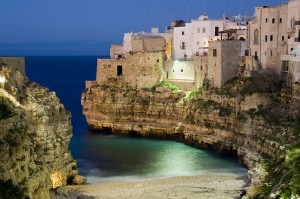
Puglia (a.k.a. Apulia) is located in southeast Italy, or as many describe it, the “heel” of the boot. Flanked by the Adriatic and Ionian seas, it’s a spectacularly fertile peninsula, known for growing olives, figs, almonds, wheat and of course, wine grapes. Its Meditterranean climate is hot, with long sunny days cooled off by ocean breezes. The region has been inhabited for many centuries, with wines factoring in throughout. The Greeks, Romans, Goths, Lombards, Byzantines, Turks and Venetians all occupied the province at various stages from several centuries B.C. up until 1861, when it was officially recognized as part of Italy.
Next to wine, olive oil is its biggest industry, accounting for half of Italy’s production. Red wine has come from Puglia in profuse quantities, and garnered the region a reputation for being a terrific source of “plonk” for a long time. Producers enjoyed success for this mass production, and happily churned out oceans of wine used for Vermouth and bulk blending purposes. But by the end of the 20th century, the wine drinking populous had become more interested in quality over quantity, the DOC laws put more restrictions on yield allowances and producers shifted to more focused wines.
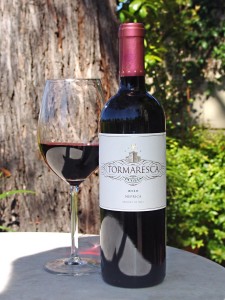 Puglia has dozens of DOCs and is divided regionally from north to south into Foggia, Bari, Taranto, Brindisi and Lecce. The signature indigenous grapes of the region are the red Negroamaro and Primitivo (found to be genetically the same as California’s Zinfandel), and the white, though less prolific, Verdeca. Primitivo’s main DOCs are Manduria, Gioia del Colle and Primitivo di Manduria Dolce Naturale, which is the sweet dessert wine that is the only DOCG pride of the region. Plantings of Negroamaro are far more widespread and account for nine DOCs including Salice Salentino and Brindisi.
Puglia has dozens of DOCs and is divided regionally from north to south into Foggia, Bari, Taranto, Brindisi and Lecce. The signature indigenous grapes of the region are the red Negroamaro and Primitivo (found to be genetically the same as California’s Zinfandel), and the white, though less prolific, Verdeca. Primitivo’s main DOCs are Manduria, Gioia del Colle and Primitivo di Manduria Dolce Naturale, which is the sweet dessert wine that is the only DOCG pride of the region. Plantings of Negroamaro are far more widespread and account for nine DOCs including Salice Salentino and Brindisi.
Uva di Troia, a low yield red grape with gorgeous honeysuckle perfumed aromas is found in several DOCs including Barletta, Cerignola, Canosa and Castel del Monte. Ottavianello is the Italian name for Cinsault, which is used for the production of rosé. Greco Bianco, Impigno and Moscato round out the list of popular whites, the latter used for the production of sweet Moscato di Trani DOC.
Neprica 2011 by Tormaresca would surely give you the impression of the cream of the crop wine from Puglia and trust me, you have to try it to believe it.
Alto Adige
Alto Adige is the north half of the larger region known as Trentino-Alto Adige, in northern Italy. It also borders Austria, and is bilingually German and Italian, with many Germanic influences.
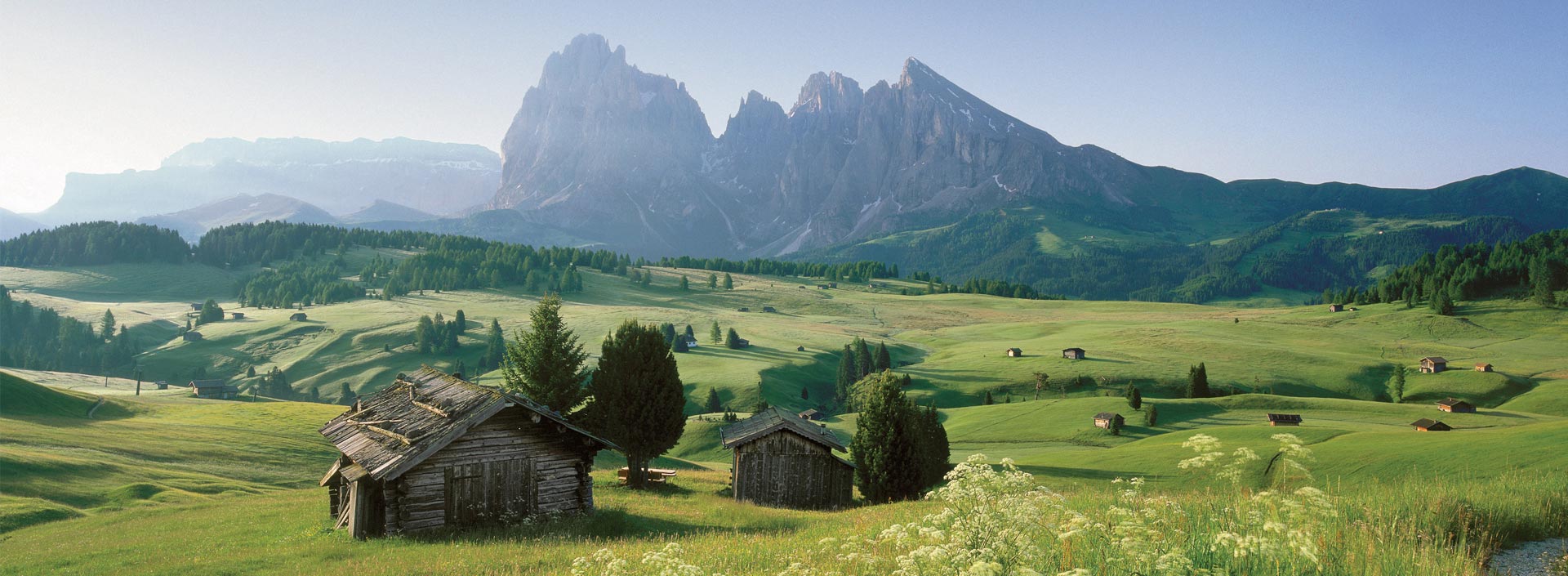 The area dates back to the Bronze Age, first inhabited by the Celts, then the Etruscans. The Romans took it over in the 1st century AD. After the fall of the Roman empire, it suffered much of the same fate as other parts of the country as the target of violent invading factions such as the Visigoths. This bi-cultural blend of Italian and German began in the Middle Ages. By the end of World War II, the industrial revolution propelled the region’s infrastructure and economy. The Alto Adige became a popular tourist resort destination, bringing with it, a global appreciation of the region’s wines, cultivated for centuries by monks. The prestigious wine school San Michele all’Adige helped bring the wines to new heights of quality into the 21st century. Along with well known cooperatives with high levels of production and big followings, the region has become known for some excellent independent wineries.
The area dates back to the Bronze Age, first inhabited by the Celts, then the Etruscans. The Romans took it over in the 1st century AD. After the fall of the Roman empire, it suffered much of the same fate as other parts of the country as the target of violent invading factions such as the Visigoths. This bi-cultural blend of Italian and German began in the Middle Ages. By the end of World War II, the industrial revolution propelled the region’s infrastructure and economy. The Alto Adige became a popular tourist resort destination, bringing with it, a global appreciation of the region’s wines, cultivated for centuries by monks. The prestigious wine school San Michele all’Adige helped bring the wines to new heights of quality into the 21st century. Along with well known cooperatives with high levels of production and big followings, the region has become known for some excellent independent wineries.
Many of the wines are identified by DOC title, of which there are many, and/or district, further broken down into commune zones, that each have an Italian and then a German name. For example, Alto Adige Terlano is also called Sudtirol Terlaner, all referring to wines cultivated from the vineyards surrounding the town of Terlano.
Alto Adige wines very much bear the mark of its Germanic cultural identity, with white varietals such as Gewürztraminer, Riesling, Kerner, Müller–Thurgau and Sylvaner. What many consider the world’s best expressions of Pinot Grigio are produced here.
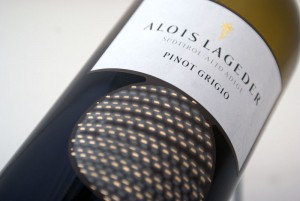 The best known local indigenous varietals are both red. Schiava (Vernatsch) is the most widely planted. It’s a popular, light, fruity red, sometimes produced in an off dry style. Lagrein is a bolder, darker red that is characterized by its perfumey aromatics. Lagrein also makes excellent rosés. The two are sometimes blended together to give Schiava more fragrant depth and Lagrein more fruit to offset its tannic properties. Moscato Rosa, a rare Muscat clone, produces prized dessert wines.
The best known local indigenous varietals are both red. Schiava (Vernatsch) is the most widely planted. It’s a popular, light, fruity red, sometimes produced in an off dry style. Lagrein is a bolder, darker red that is characterized by its perfumey aromatics. Lagrein also makes excellent rosés. The two are sometimes blended together to give Schiava more fragrant depth and Lagrein more fruit to offset its tannic properties. Moscato Rosa, a rare Muscat clone, produces prized dessert wines.
The wine we want to share with you from this region is prestigious white wine, Pinot Grigio 2012 from Alois Lageder and then you would really want to visit the place just to drink more wine!
Tuscany
To consider modern day Tuscan wine, one should give props to the Etruscans, who inhabited this central Italian region starting in the 6th century BC. Tuscany is a land of abundant sunshine, rolling green hills, spring water, a spectacular breezy coast and rich soils. If you’re going to set up a civilization, this is a pretty terrific place to do it. Especially if you have a bunch of gods that need worshipping with the heavy consumption of wine.
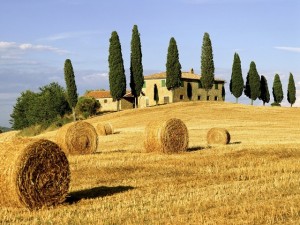 But around the 4th century BC, the Etruscans left this beautiful landscape, for all intents and purposes absorbed into the Roman culture. Their civilization, the villages and agriculture they set up, was left to the elements and the vineyards dried up. Through the centuries, people returned to the region. But it spent a lot of time under dispute by various factions such as the Pisans, Sienese and Florentines. It was a dangerous place to live, what with all the hidden marauders and mosquito-ridden swamps, though many of the grapes planted there continued to grow wildly.
But around the 4th century BC, the Etruscans left this beautiful landscape, for all intents and purposes absorbed into the Roman culture. Their civilization, the villages and agriculture they set up, was left to the elements and the vineyards dried up. Through the centuries, people returned to the region. But it spent a lot of time under dispute by various factions such as the Pisans, Sienese and Florentines. It was a dangerous place to live, what with all the hidden marauders and mosquito-ridden swamps, though many of the grapes planted there continued to grow wildly.
Say what you will about Mussolini, but it was under his fascist government in the 1920s that Tuscany was rebuilt and became a prime vacation spot. Wine production was slowly returning to there once again. By this time, Brunello and Chianti from the region’s signature grape, Sangiovese, were produced. But only a few wineries were developing wines of the high standards we now associate with Tuscany. Most of the Chianti, while popular, was rustic table wine, the kind in the “fiasco” bottles with the straw basket on the bottom.
In the early 1940s, Marchese Mario Incisa della Rocchetta moved to Bolgheri on the coast. In the interest of making wines for private consumption, he imported Cabernet Sauvignon vines from Bordeaux’s Chateau Lafitte and established a little vineyard called Tenuta San Guido. While very rustic at first, he began to develop his wines into what evolved into Sassicaia, what some say is the duperest of the so-called Super Tuscans.
Today, many wines of Tuscany are considered among Italy’s finest, with an impressive number of DOCGs, wines that are designated with a superior quality rating. Besides the Sangiovese giants of Chianti, Brunello, Morellino di Scansano and Vino Nobile di Montepulciano (Montepulciano, incidentally, is NOT the grape bu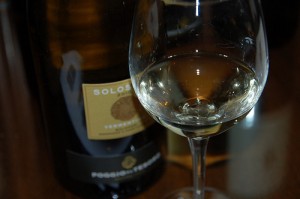 t the place in this case), and the rise of the Super Tuscans, there are a vast amount of wines worth exploring from this region, and dozens of subregions of every color. For example, Vernaccia di San Gimignano is a versatile, dry white vinified in styles from young, crisp and light to aged and full-bodied. The Vin Santos made from dried Trebbiano grapes and Passitos produced from Elba’s Aleatico grape are some of the world’s finest dessert wines. One can plan a whole meal with Tuscan wines from whites to rosés to reds and even finish it off with some fine Tuscan grappa. And even though we mostly recommend you the red wine from here but this time we want you to try this special white, Vermentino Solosole 2011, Poggio Al Tesoro. Buon appetito!
t the place in this case), and the rise of the Super Tuscans, there are a vast amount of wines worth exploring from this region, and dozens of subregions of every color. For example, Vernaccia di San Gimignano is a versatile, dry white vinified in styles from young, crisp and light to aged and full-bodied. The Vin Santos made from dried Trebbiano grapes and Passitos produced from Elba’s Aleatico grape are some of the world’s finest dessert wines. One can plan a whole meal with Tuscan wines from whites to rosés to reds and even finish it off with some fine Tuscan grappa. And even though we mostly recommend you the red wine from here but this time we want you to try this special white, Vermentino Solosole 2011, Poggio Al Tesoro. Buon appetito!



 0
0